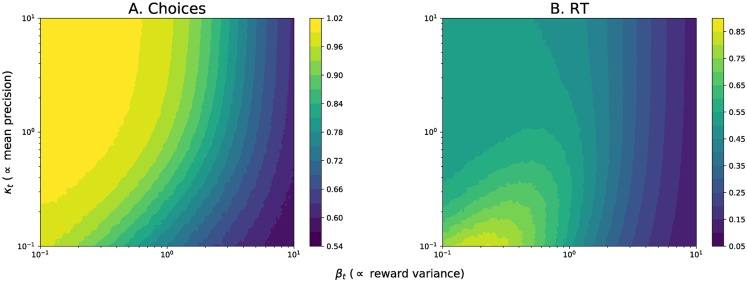Fig 3. Simulated policies for the AC-HAFVF as a function of reward variance βj and number of effective observations κj, for a fixed value of posterior mean rewards (μ1 = −μ2 = 1), shape parameter α1 = α2 = 3 threshold ζ = 2, start point z0 = ζ/2 and τ = 0.
A. Choices were more random for more noisy reward distributions (i.e. high values of βj) and for mean estimates with a higher variance (i.e. with a lower number of observations κj). B. Decisions were faster when the difference of the means was clearer (high κj) and when the reward distributions was noisy (high β). Subjects were slower to decide what to do for noisy mean values but precise rewards, reflecting the high cognitive cost of the decision process in these situations.

